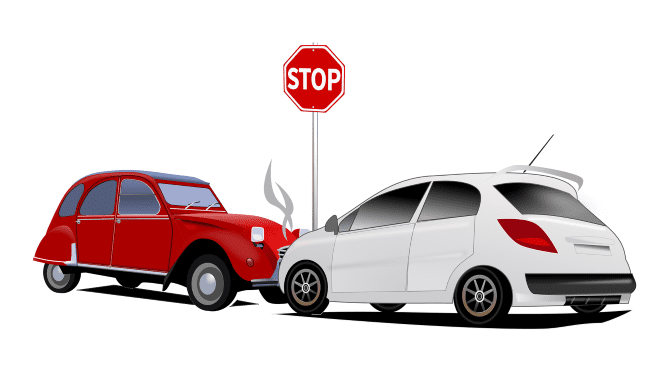Get Quotes
5MinuteInsure.com is not yet available in your area. Check back
soon!
This article has been reviewed by licensed insurance industry expert Moshe Fishman.
You’ve been in a car accident. The other driver is at fault. That means the other driver’s car insurance will pay for everything, right? Not necessarily.
Suppose the other driver doesn’t have auto insurance, or their insurance won’t cover the damages. They may even flee the scene of the accident. Scenarios such as this are why uninsured motorist coverage exists.

You might also be surprised to learn that uninsured motorist coverage isn’t a requirement in most states. Learn about uninsured motorist coverage and underinsured motorist coverage to understand the differences between these two types of coverage and whether they’re something you should consider adding to your auto insurance policy.
Depending on which state you live in, uninsured motorist coverage is either an optional or required policy addition that provides coverage for damages and injuries sustained in an auto accident because of the actions of an uninsured driver.
Uninsured motorist (UM) coverage takes effect in the event of an accident where the other driver is at fault and:
Uninsured motorist insurance is represented by two coverage types as follows:
Some drivers only carry the minimum amount of liability coverage legally required by their state. Their liability limits might easily be exceeded. Underinsured motorist coverage protects you in the event of an accident caused by a driver who has insurance but isn’t sufficiently insured to cover the total amount of damages and costs.
When it comes to Underinsured Motorist coverage, you’ll find that there are two types of coverage.
Covers the gap between the at-fault driver’s liability insurance limits and the total expenses of medical bills and any wages that were lost as a result. , etc. But does not cover vehicle repairs or medical bills in an accident that you cause.
Underinsured Motorist Property Damage or UIMPD covers the gap between the at-fault driver’s liability insurance limits and the total amount of damages to your car or your property.
Understanding Uninsured Motorist Insurance is noted by 100/200. The first number refers to the amount of bodily injury coverage per person. The second number refers to the amount of bodily injury coverage per accident.
Does Uninsured Motorist Coverage pay for hit-and-run accidents?
Yes, uninsured motorist coverage provides coverage in the event of a hit-and-run accident. If your car is damaged while parked and the person at fault doesn’t leave a note, this should also be covered.
Currently, there are twenty-two states requiring uninsured motorist insurance. Here is the list in alphabetical order: Connecticut, Illinois, Kansas, Maine, Maryland, Massachusetts, Minnesota, Missouri, Nebraska, New Hampshire, New Jersey, New York, North Carolina, North Dakota, Oregon, South Carolina, South Dakota, Vermont, Virginia, Washington DC, West Virginia, and Wisconsin.
The percentage of people driving around without insurance varies from state to state. In 2019, the state with the highest number of uninsured drivers was Mississippi, where approximately 29.4% of drivers did not have insurance. According to the Insurance Research Council, other states with a high number of uninsured motorists include Mississippi, New Mexico, Michigan, and Tennessee. The state with the lowest number of uninsured drivers in 2019 was New Jersey, where only 3.1% of drivers did not have insurance.
Even if you have good health insurance, uninsured motorist coverage is a good idea for several reasons. UMBI and UIMBI will cover the medical bills due to the accident including co-pays and deductibles. Depending on your insurance, this could save tens of thousands of dollars.
With health insurance, you might be limited to a network of providers, whereas UMBI will pay for care from a wider variety of sources. For serious accidents that will require months of rehabilitation, being able to choose your provider is a definite advantage. Also, UMBI pays for the medical bills of the passengers who are in your car at the time of the accident.
Uninsured motorist coverage is cheaper than you’d think, especially considering how much it can save you in the event of a major accident. Depending on which state you live in, the cost of uninsured motorist coverage depends on the number of uninsured motorists in your state and tends to be higher in states with a high percentage of uninsured motorists.
However, uninsured motorist coverage generally runs between $50-$75 per year. This includes both bodily injury and property damage coverage. The usual factors will affect the premium cost such as the policy holder’s age and driving history and how much coverage is purchased.
Unless you live in a state where uninsured motorist coverage is required, you’re not required to have it. However, that doesn’t mean that you shouldn’t consider adding it to your policy. Considering the relatively small expense, the peace of mind that it’ll provide is worth the cost. Check with your insurance agent or carrier to see how much it’ll cost to add uninsured motorist coverage to your policy.